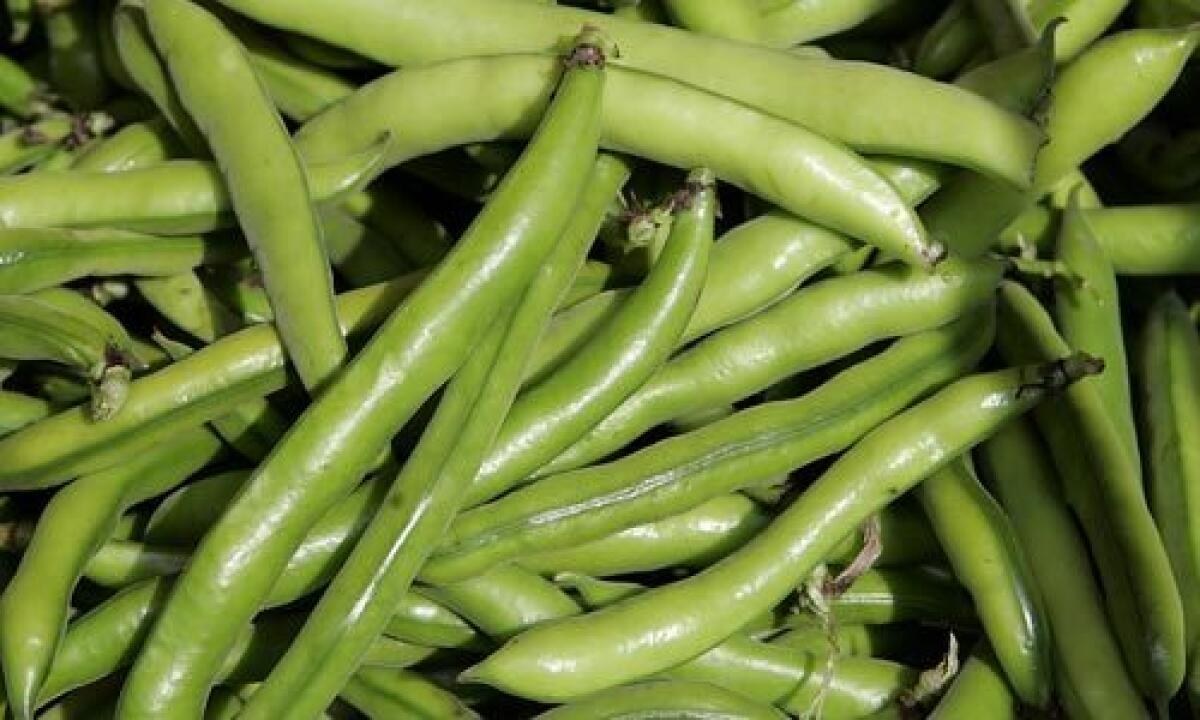Fava beans: How to choose, store and prepare

In San Juan Capistrano, spring is heralded by the arrival of the first swallows. In Santa Monica, it’s the first fava beans. One of the most popular of all farmers market vegetables, favas have ascended to culinary stardom contrary to all reason. They’re expensive. (The first ones of the year are usually around $3 a pound -- in the pod.) And you have to buy a mountain to wind up with a molehill. (It takes more than 3 pounds of pods to make enough for two respectable servings of beans.) And then you have to peel them a second time to remove that fine pale skin that surrounds each bean.
But still is there any taste that promises spring as much as that bright flash of green you get from a fava bean?
How to choose: Select pods that are firm and filled out along the entire length. If you choose the pods with the smallest bumps, you’ll get the youngest beans and they won’t need to go through the second peeling. (Further hint: If the secondary peels covering the individual beans are not white, they don’t need to be removed.)
How to store: Store favas in the refrigerator in a tightly sealed plastic bag. They’ll last about a week.
How to prepare: Here’s cookbook author Paula Wolfert’s method: Peel the pods first, which gives you individual beans. Place the beans in a mixing bowl and cover with boiling water. When the water is cool enough to touch, begin peeling by using your thumbnail to nick a slit in the skin. Squeeze and the inner bean will pop right out (often in two halves, but don’t worry). The best way to enjoy favas is also the simplest. It’s the old Roman thing: Buy the smallest pods you can find (diameter, not length) and the beans won’t need a second peeling. Then eat them raw alongside a bowl of moist sheep’s milk feta cheese (fresh pecorino would be more traditional, but it is hard to find).
As the season progresses, you will find that the beans at the market will get larger and starchier and they’ll need the second peeling and cooking as well. Braise those beans with bacon and cream -- and enlist a couple of kitchen workers to help.
More to Read
Sign up for our L.A. Times Plants newsletter
At the start of each month, get a roundup of upcoming plant-related activities and events in Southern California, along with links to tips and articles you may have missed.
You may occasionally receive promotional content from the Los Angeles Times.






